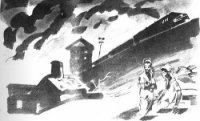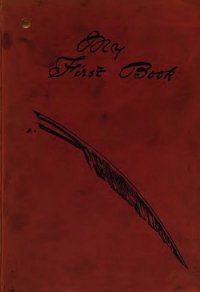Operation Nemesis: The Assassination Plot that Avenged the Armenian Genocide - Bogosian Eric (мир книг .txt) 📗
As the Tashnags had hoped, the trial of Tehlirian had become the trial of Talat Pasha.
After the VIPs testified, five doctors and psychiatrists, including those who had cared for Tehlirian before his arrest, took the stand. They reported on his symptoms (fainting spells, nightmares) and offered their theories. They attempted to define the term “epilepsy.” Their testimony would determine from a medical perspective whether or not Tehlirian was in his right mind when he pulled the trigger. According to a Dr. Stormer:
He was never seriously ill until nineteen fifteen, when he was a witness to the massacre that has already been sufficiently discussed today. In a deeply emotional way, he told me that both his parents and all his brothers and sisters were killed. Shuddering with terrible fear, he recalled the moment in which he saw the ax of a Turk descend on his brother’s head and split it in two. He himself received injuries in the event, a head wound that is not serious but nevertheless is there, and injuries to his left arm and knee. The horrible impression of these murderous deeds, combined with the physical injuries and exertion, robbed him of consciousness. He was unconscious for three days and finally woke up covered with corpses and awakened by the intense corpse stench that has stamped him for all eternity and has gained a firm foothold in the organs of his soul. He says that whenever he reads of horrifying events, and above all when he recalls the massacre, the smell of the corpses repeatedly penetrates his olfactory organ—and in such a way that it is of decisive importance since he cannot get rid of it.
The doctors determined that Tehlirian’s illness was not a figment of his imagination. The symptoms followed a pattern: subsequent to feeling weak and seconds before fainting, Tehlirian always smelled blood. There was no reason to doubt that he had had these experiences. People who had seen him fall into one of the seizures later reported that his whole body would tremble. He would then lose consciousness. Upon awakening, he would feel pain in his legs and arms. Exhausted, he would become very thirsty and eventually fall into a deep sleep. (Such symptoms could be typical of epilepsy.)
The doctors who had examined Tehlirian also found scars all over his body. He told them that the Turks had attacked him physically, and the wounds seemed to be definitive proof that he had in fact been attacked while a hostage in the caravan. The possibility that he might have received the wounds in another way—for instance, as a soldier in battle—was never brought up during the testimony.
Every single person in that courtroom knew that the war had brought with it horrors never before experienced. Over fifty percent of the soldiers serving in “the war to end all wars” were either killed or wounded. There had been World War I battlefields with casualties numbering in the hundreds of thousands. World War I veterans had been subject to types of warfare so terrible that these weapons would soon be outlawed. Poison gas alone left hundreds of thousands of men with severe facial scars, blindness, and respiratory problems that plagued them for the rest of their lives. Most had been exposed to the nonstop rattle of machine gun fire and bursting bombs, to grenade and mine shrapnel. Some had endured starvation or survived bouts of cholera or typhus. Young men returned home wrecked and stupefied from witnessing the massive carnage. A syndrome never before identified was added to the list of war injuries. It was called “shell shock.”
By 1921, the science of the mind had captured the imagination of the medical world. This was the era of Freud. One year earlier, in February 1920, the Berlin Psychoanalytic Institute had been founded, and the idea that actions could be motivated by subconscious forces was gaining favor. Within this context, Tehlirian presented a fascinating case to the doctors tasked with examining him. Here was a man who had suffered trauma during a violent episode and apparently committed murder five years later as a result of that trauma. The vivid dreams in which his mother commanded him to kill added another layer of complexity for analysis. In addition, the five doctors who testified were taking the stand publicly; their reputations were at stake. For a few days, all eyes were on them, forcing them to defend their pet psychological theories. Each doctor felt obliged to weigh in with a lengthy and verbose analysis of the symptoms and what those symptoms might indicate.
The debate in the courtroom boiled down to determining exactly what level of “free will” Tehlirian possessed at the moment when he pulled the trigger and killed Talat. Was it possible that his epileptic fits could create a kind of insanity that would force him to do things against his will? Also, what about these “appearances” by his mother? Did he really believe she was actually standing there before him? When asked if he believed his mother was viscerally present, Tehlirian answered yes, adding another piece to the jigsaw puzzle of his mental illness. Doctors offered the theory of the “compulsive precept,” defined as an overwhelming psychological compulsion that had grown out of the shock of the experience of seeing his family murdered (which in fact had never happened).
The consensus view was that Tehlirian had been traumatized by the experiences he claimed to have had in Anatolia. The verdict from a medical perspective was clear: the Turks had done terrible things to Tehlirian, he was psychologically damaged, and his condition had contributed to his murderous impulse. In sum, the doctors gave Tehlirian’s defenders exactly what they were looking for.
In the end, the judge and jury being completely ignorant of Operation Nemesis, there was only one verdict they could hand down. In under two hours, the verdict was arrived at: “not guilty.” At first Tehlirian didn’t understand what was being said. He turned to Vaza, his co-conspirator and translator: “What does that mean?”
“It means you’re free.”
People in the courtroom applauded. Women rushed toward Tehlirian with bouquets of flowers. Zakarian moved Tehlirian out of the courtroom through the back and into a waiting car, requesting that no pictures be taken. He knew that from this day on, Tehlirian would be a target. No reason to give his hunters any more ammunition than they already had.18
In the words of a New York Times headline, “They Simply Had To Let Him Go.” The opinion piece that followed was prescient: “The court before which the case was tried practically has given, not only to this young man, but to the many others like him and with like grievances, a license to kill at discretion any Turkish official whom they can find in Germany.” The Times writer criticized the jury’s decision, calling it “a queer view of moral rightness [that] opens the way to other assassinations less easily excusable than his or not excusable at all.” Yet, the editorialist added, “what other verdict was possible?” The whole logic of the court was explained: “An acquittal on the ground of insanity, the usual device of jurors who do not want to punish a killing of which they approve, would have been more than ordinarily absurd in the case of a man as obviously sane as this Armenian is, and to have hanged him, or even to have sent him to prison, would have been intolerably to overlook his provocation.” The commentator puts it in a nutshell: “The dilemma cannot be escaped—all assassins should be punished, this assassin should not be punished. And there you are! The solution lies further back and long ago, when German officers in Turkey permitted the massacres of Armenians, though they had the power to prevent them.”19




